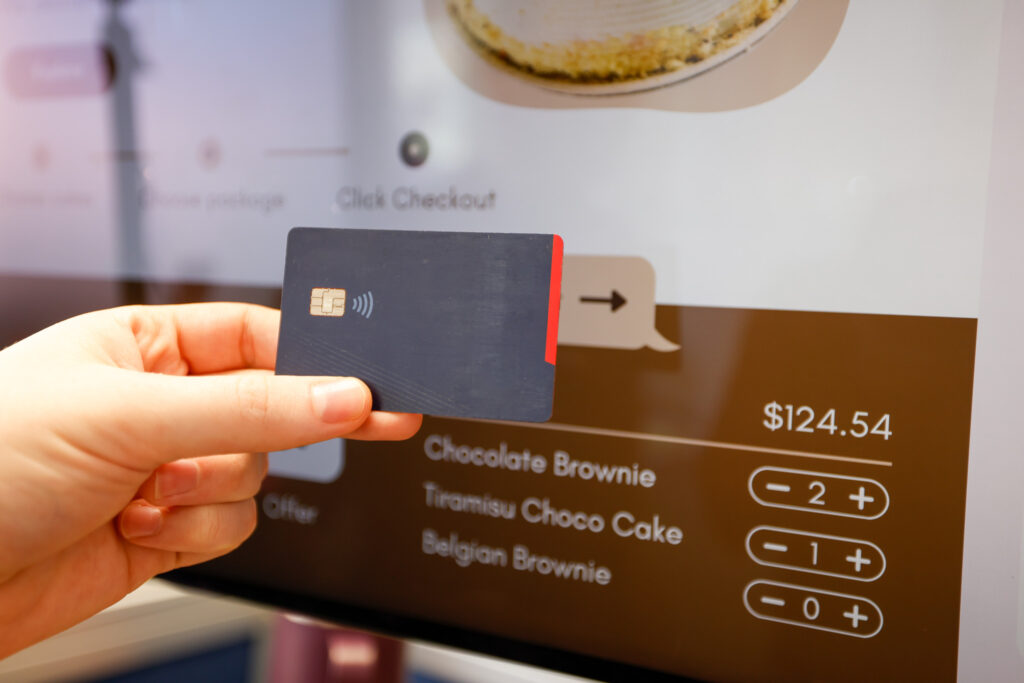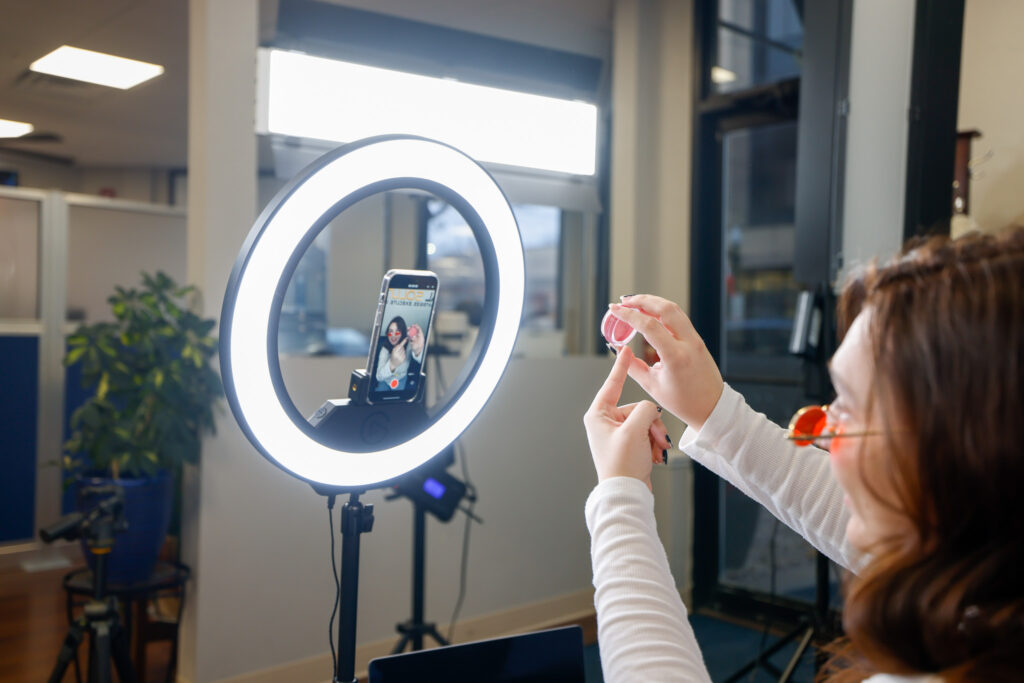
What Does a Strong Paid Media Strategy Look Like?
- What Is a Paid Media Strategy?
- What are the Benefits of a Paid Media Strategy?
- What a Strong Paid Media Strategy Looks Like
- Takeaway
Running an advertising campaign without a strategy is like playing the lottery. Any success will be down to luck, and the odds aren’t in your favor. Simply put, you can’t rely on chance to maximize your ROI. You need to take a systematic approach, and that means creating a strong paid media strategy.
Your strategy needs to set objectives that align with the business's. It also needs to define your target audience, the tactics you use, and the metrics required to measure success and optimize your ad campaign.
Creating a paid media strategy may seem unnecessary, especially when google and social media apps make it so easy to set up an account and launch a campaign.
But while you may enjoy some short-term results, it will still be a gamble if you don’t do the groundwork to discover your audience, target them effectively and create content they want to engage with.
So, don’t be tempted to take a shortcut. We will explain what a paid media strategy looks like and what you need to do to create one that delivers the ROI your need.
What Is a Paid Media Strategy?
A paid media strategy will create your road map for your advertising campaign, defining the objectives, identifying the target audience, and laying out the steps to reach your goal.
A paid media campaign uses the internet and social media to help you sell products, get new leads, increase brand awareness, and drive traffic to your website, to name a few.
Paid media is one of three approaches that are part of an effective, comprehensive marketing strategy. The other two approaches, earned and owned media, rely on organic content. Here are some characteristics of the three media types.
- Paid media: Pay-per-click ads, display ads, social media influencers, social media ads, paid searches, paid content promotion, and social media ads
- Earned media: Shares, reposts, reviews, likes, etc.
- Owned media: Website and social media channels.
The paid media strategy, therefore, works as part of the overall marketing strategy
A paid media strategy can also help to improve the effectiveness of the earned and owned media. That’s because you could use it to raise awareness about your organic content or improve engagement by driving traffic or boosting shares and reposts.
What are the Benefits of a Paid Media Strategy?
A strategy focusing on paid traffic helps you reach a much wider audience on the internet and social media and will help grow your business faster. A paid media campaign will allow better targeting and faster results than an organic marketing strategy alone.
Faster Results
Organic content can take months or years to build a reputation, earn followers, and get conversions. Well-targeted ads instantaneously drive traffic to your website, producing new leads and sales much more quickly.
Better Targeting
Organic content relies on users finding your content through search engine optimization and generating engagement such as shares, likes, and so forth. But your control over content ends at the media you own, whether a website or social media account. Therefore, any ability to target an audience beyond that is almost nonexistent.
Paid ads, on the other hand, on social media and Google, provide resources that get your ads in front of your target audience. Platforms let you create audiences based on demographics, interests, preferences, and past interactions with the internet or social media. They provide insights you can use to redirect your campaign and improve performance.
A paid media strategy is your roadmap to success. Your strategy is formed from your business objectives, and it determines the tactics you will deploy. In order to get consistent results, you need to start with a laser-focused strategy.
What a Strong Paid Media Strategy Looks Like
A paid media strategy contains the steps you need to take to achieve your goals.
1. Define Your Objectives
Your paid media strategy should clearly state the objective of your advertising campaign. It should align with your business goals, whether it’s rapid growth, building awareness, or improving brand loyalty.
You need to have a clear objective so you can…
- Set meaningful goals
- Choose targets and metrics to measure performance
- Select your tactics
- Create realistic deadlines
2. Know Your Target Audience
Another critical step before fleshing out the paid media strategy is clearly defining your target audience, which is necessary to…
- Focus your ad spend on those most likely to engage and become customers.
- Know where to find them on the internet or social media and target them with ads.
- Create content that will engage them.
- Segment your audience and improve ad performance.
Creating an avatar or ideal customer profile (ICP) or avatar that embodies the qualities of your ideal customers will help you create ads and identify your target audience. You can look at your customer base to look at common attributes of customers that deliver the best results or conduct market research.
Some qualities that will help define your avatar include the following…
- Demographics including age, gender, income bracket, education, employment, family status, and so forth
- Pain points, including challenges they face.
- Interests and hobbies
- Beliefs
Once you identify your target audience, you can segment it into smaller subgroups to more accurately target your content. You can expect better results when your content more specifically addresses their needs.
3. Create a Budget
Your paid media strategy should include a budget to achieve your goals and deliver the best ROI. It is part of your overall marketing budget, so it’s important to consider other marketing priorities.
To calculate the budget, you will need to consider the cost of placing ads, customer value, target conversion rates, lead to customer rates, and so forth.
Paid advertising usually works on a bidding system, which is used to determine ad placement. Since most platforms place your ads automatically once you set your parameters, you’ll also need to set up a budget for each platform.
Although ideally, you’ll have researched the costs before starting, you can set a preliminary budget and adjust it when you have a better idea of your tactics and ad costs. As a general guide, you could start with 10% of your marketing budget and modify it later.
4. Select Targets and Performance Indicators
To know how your campaign performs, you must create targets and performance indicators that measure your progress toward your campaign objectives.
Common indicators that marketers use include:
- Views
- Engagement including likes, shares, comments,
- Ad clicks
- Click through rates
- Website visits
- Conversion rates
- Cost per click
- Leads generated
- Cost per lead
- Time on page
- Attribution
But to judge whether the campaign is a success overall —something your CEO or client will want to know —you need to determine your overall revenue, costs, and ROI. To plan future campaigns, you should also make sure to measure…
- Number and cost of new leads
- Number and cost of new customers
- Number and cost of conversions
5. Decide What Media Will Best Reach Your Target Audience
There are multiple options to include in your paid media strategy, including display ads, paid searches, social media ads, influencers, native advertising, and so forth.
Your choice of media will depend on your objectives, whether it reaches the target audiences, your budget, advertising costs, etc.
We’ll now take a closer look at some of the different options:
Google Display and Search Ads

Google offers display and search ads and claims to have a reach of 90 % of internet users worldwide!
Display Ads
Display ads are a great way of reaching your audience as they browse online. There are multiple options, including the following:
- Banner ads
- Pop-up ads
- Videos
- Animated content
- Interactive content
- Shopping ads
- Localized ads
- Text ads
You can create and manage a display ad campaign using Google Ads advanced options. Google will walk you through the steps including setting goals, creating content, choosing keywords, creating your budget, and analyzing the results.
Search Engine Marketing (SEM)
You can also use Google Ads to create a search engine ad. These are those text-based ads you see promoting websites on the search engine results page. They can deliver results much quicker than search engine optimization does with organic content.
Google sells these ads using a keyword-based bidding system. You choose keywords that users are most likely to use to search for your content. You’ll need to research to select the most effective ones. The free Google Keyword Planner or third-party apps like Semrush can help your research.
You can use Google’s diagnostic tool to check your ad’s Quality Score and understand how to make them better match your audience’s search intent. This will not only improve your click-through rates and customer experience but also indirectly help you rank higher on the search engine results page.
Use Google Ads to create these ads.
Influencer Marketing

Influencer marketing is a fast-growing way to promote products through collaborations with creators with followers who match your target audience. Whether they have a solid fan base or are experts in your industry, you can benefit from the trust and authority they’ve built with their audience.
By promoting your product on social media, influences can help your company reach new audiences, boost awareness, generate leads, and even sell products directly.
Some businesses may be better off working with micro-influencers, who are less expensive and have smaller but more specialized audiences.
TikTok marketplace helps you find influencers to partner with.
Social Media Ads
When choosing which advertising channels to use for your paid media strategy, there are many factors to consider, including ad cost, reach, formats, and so forth.
But first up, you need to know where your target audience will most likely see your ads. One simple way to find out if your target audience uses a particular social media platform is to visit it and read the posts and comments.
Most online and social media advertising options offer Costs per click (CPC), allocating ad space on a bidding system. CPC is considered one of the most cost-effective strategies.
Facebook still has the largest social media users, with 2.9 billion monthly active users. 93 % of social media marketers use Facebook ads. In a HubSpot report, 40 percent of markets questioned said Facebook provided the highest ROI, making it the most effective—excluding TikTok, which wasn’t named in the study. In addition, it has one of the lowest average costs per click $0.97
You can use Meta’s Ad Manager to create and manage your Facebook. It offers A/B testing and robust analytics.
Ads Manager offers 3 tools to help you target your ads:
- Core Audiences targets audiences based on demographics, location, interests, behavior, connections, etc.
- Lookalike Audiences identify audiences similar to your existing customers and leads.
- Custom Audiences allows you to connect with people who have had contact with your brand before.
Here are some key facts about Facebook:
- User Age: 60% are between 18 and 44
- User Gender: 57% are male, 43% are female
- Average Cost Per Click: $0.97
- Engagement Rate: 0.13%
- Average time spent on platform: 33 minutes
- Advertising Media Opportunities: Video ads, image ads, carousel ads, full-screen ads, collection ads
Instagram has 1.48 billion active monthly users, with a higher engagement rate than Facebook. But not as high ROI, according to the HubSpot study. 30% of marketers said Instagram provided the most ROI, making it second to Facebook.
Although Instagram has become one of the most popular platforms for watching videos and video shorts, 70 % of all content posted on Instagram is still photos. 81% of Instagram users research new products and services on the platform.
Instagram is a go-to app for influencer marketing, With 500,000 active influencers. 93% of Instagram marketers plan to use it for influencer marketing.
- Age: 61.9 % are between 18 and 34
- Gender: 50.7% are female, 49.3.4% are male
- Average Cost Per Click: $3.56
- Engagement Rate: 0.83%
- Average time spent on platform: 29 minutes
- Paid Media Opportunities: Videos, photos, carousels, slideshows, stories, shoppable Collections, playable ads, and influencer partnerships
TikTok
TikTok, the home of user-generated video shorts, is Gen-Z's favorite. 25% of users are aged between 10 and 19 years old. TikTok has 1 billion active monthly users and one of the the highest engagement rate of over 5.96%. This outstrips bigger sites, including Facebook and Instagram, which have engagement rates of less than 1%, according to Social Insider.
- Age: 64.4% are between 20 and 49, with 25% of users between 10 and 19.
- Gender: 61% are female, 39% are male
- Average Cost Per Click: $1
- Engagement Rate: 5.96%
- Average time spent on platform: 89 minutes
- Advertising Media Opportunities: Video, image, playable, carousels, interactive ads, and working with influencers
Twitter has 443 million active monthly users. Twitter is the sixth most effective at producing ROI, according to the HubSpot study, with roughly 7% of marketers saying Twitter provided the most ROI.
- Age: 59.2 % of users are aged between 25 and 49
- Gender: 61.6% are male, 38.4% are female
- Average Cost Per Click: $0.38
- Engagement Rate: Engagement rate .05%
- Average time spent on platform: 31 minutes
- Advertising Media Opportunities: Video, image, carousel, and text ads
6. Ad Content and Messaging
Regardless of the media you use to engage your audience, your ads should get your message across as concisely as possible and include a call to action (CTA) that directs your audience to take the action you want.
To drive interest, focus on addressing the audience’s pain points and needs rather than the features your product offers. Show them how your product solves their problems. Using the StoryBrand format is an excellent way to convey the message.
Your sales and customer service team might have great insights to help you discover your customer’s concerns and pain points. You can also read product reviews and social media comments to get more ideas.
7. Analyze the Results
The beauty of digital media is tracking your results live rather than waiting until the end of the campaign. This gives you more control over the outcome. You can try different tactics, tweak your ads, reallocate resources, and change your target audience.
Using A/B testing, you can try different versions of the same ad or target a different audience to see which way works best.
Takeaway
If you want to run a successful advertising campaign, the first step is to create a paid media strategy that lays out your road map for reaching your goals.
Setting out your objectives and creating meaningful steps to reach them is essential to measure your success and making sure your advertising campaigns succeed. But you also must take the time to define your target audience and choose the right channels to reach them.
Now that you know what a strong paid media strategy looks like, you may feel you need expert help to create your own. Our team is here to do just that. So, contact our marketing team to set up a free consultation and start your next ad campaign on the right foot.


